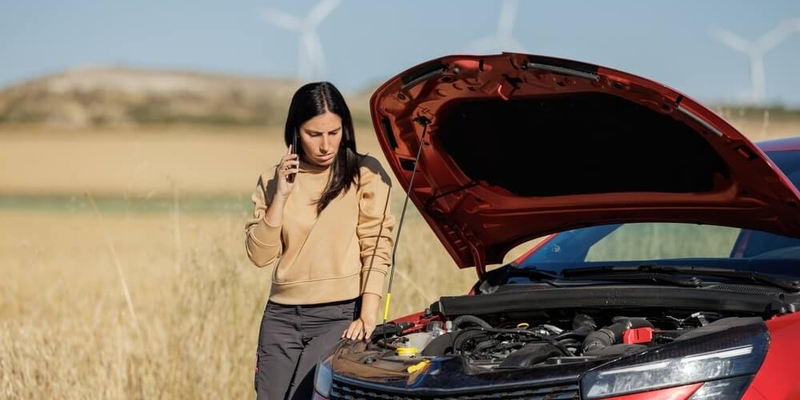
If you are not redirected within 30 seconds, please click here to continue.
Samedi: 10h – 16h HAE

If you are not redirected within 30 seconds, please click here to continue.
If you are not redirected within 30 seconds, please click here to continue.
What to Do if You Can’t Find Your Credit Card

We’ve all had the panic-inducing experience of not being able to find our credit card. Usually, that heart-in-your-throat feeling is soothed when you discover it in an often-overlooked pants pocket, a wallet fold or cupholder in the car. But occasionally, you won’t be so fortunate, and you’ll lose your credit card.
It happens, and if you find yourself in the unenviable position of not being able to find your credit card, here’s what to do.
Freeze your credit card
If you can’t find your credit card, your very first step should be to freeze your account. Most credit cards have a toll-free number on that back that you can call to report your credit card as stolen – but that isn’t much help if your credit card has been misplaced.
Fortunately, you can usually freeze your credit card directly from your online banking or mobile app. The app may ask you whether you think the card was misplaced or stolen. This option may allow you to temporarily lock your account while you search for your credit card.
These features can be useful, as they generally allow users to unfreeze their accounts just as quickly with a few simple clicks.
Based on your account activity, if you suspect your credit card has, in fact, been stolen, you should contact your credit card issuer and report it. The easiest way to do this is to call the toll-free number typically found in your online banking portal or mobile app. Once you report your credit card as stolen, you will not be liable for any unauthorized charges that occurred between losing your credit card and reporting it as stolen.
However, you will likely lose access to your account until you receive a replacement.
Check your accounts
Whether or not you suspect your credit card was stolen, once you realize you have misplaced your card, you should carefully monitor your accounts to see if any unauthorized transactions occur. If your credit card has tap technology, a potential thief won’t need your personal identification number (PIN) to make purchases. Depending on the issuer, this could result in purchases up to $250 (the limit for tap) on the card. Most credit card issuers offer their customers fraud protection, which means that as long as you report the card as stolen promptly and you haven’t disclosed your PIN to anyone, you typically won’t be on the hook for any fraudulent charges.
How to replace your credit card
Once you report your lost or stolen credit card to your issuer, they should ask if you’d like a replacement. If you say yes, your issuer will mail you a new card, or you may be able to pick up a spare at your bank branch. This process will take several business days, during which you will not be able to use your old card. So, it’s a good idea to use an alternate credit card or backup debit card in the interim.
Compare the best credit cards on RATESDOTCA
Find the best credit card for your lifestyle today!
Update your automated billing
Once you’ve reported your credit card as stolen and requested a new card, you’ll need to determine if you have any automated payments due before the new card is scheduled to arrive in the mail. Your credit card issuer will not give you the new card details over the phone. You’ll need to wait until you receive and activate the new card.
For those bills that are due in the meantime, call your providers and explain the situation. If you have another credit card, you may be able to make a one-time payment. Once you receive your new credit card and complete the activation steps, you should update your online billing details for all bills and automated payments.
Modern fraud features
Losing your credit card used to be a significant source of concern, but most major credit card issuers have instituted various measures to reduce the chances that your lost credit card will be used for fraudulent purposes.
These measures include:
- Card freezing – quickly freeze your card through your mobile banking app, reducing the time between discovering your credit card is missing and disabling it.
- Fraud alerts – you’ll be texted or notified by your card provider if suspicious activity is detected on your credit account, or if you have transacted at a store that had a recent data breach. These alerts allow you to approve or flag potentially fraudulent transactions.
- Zero liability – if your credit card is used for nefarious purposes, zero liability coverage ensures you won’t have to pay for any fraudulent transactions.
Top credit card safety tips
Losing your credit card is not a fun experience, but it doesn’t need to mean your financial demise. You can minimize the damage done by taking several simple safety steps.
- PIN selection – don’t choose your birthdate or any other easily guessable PIN. Choosing an easily discernable PIN can void your cardholder agreement and render you liable for fraudulent charges.
- PIN protection – you shouldn’t make your PIN easily accessible either. Avoid writing your PIN on your wallet, the card, or anywhere else that may be easily accessible by a thief.
- Keep your info current – many credit card providers have automated fraud alert systems, but they won’t do you any good if you don’t have a current phone number and email address on file.
- Monitor accounts often – don’t wait until your monthly statement is issued to monitor your credit accounts. Check your accounts weekly. If you don’t recognize charges, don’t hesitate to look into the transactions, and, if necessary, report them as fraudulent.
Report, replace, and remain calm
Losing your credit card is not a fun experience, but it doesn’t have to be the end of your financial prosperity. If you can’t find your credit card, you should act quickly and decisively. That said, there is no reason to panic. If you freeze your card promptly and report it as stolen without delay, you should have a new credit card issued quickly, and any fraudulent charges removed from your credit account.
Get money-saving tips in your inbox.
Stay on top of personal finance tips from our money experts!










